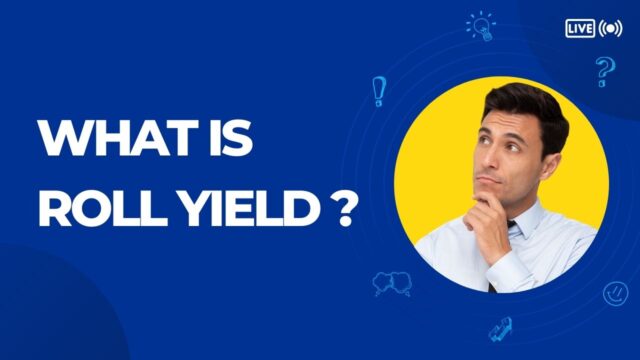
What is Roll Yield
Roll yield is the theoretical return an investor would receive if they were to roll their position in a futures contract forward to the next delivery date. The roll yield is calculated by taking the difference between the current price of the futures contract and the price of the contract at the next delivery date, and then divided by the number of days until delivery. For example, if a December corn futures contract is currently trading at $4.00 per bushel, and the January contract is trading at $4.20 per bushel, the roll yield would be ($4.20 – $4.00)/31 = 0.065%.
This means that if an investor were to roll their position forward from December to January, they would theoretically earn a 0.065% return on their investment. However, it is important to note that this does not take into account any transaction costs or changes in basis that may occur when rolling a position forward. As such, the actual return an investor realizes from rolling their position may be higher or lower than the theoretical roll yield.
Negative roll yield
A negative roll yield occurs when a futures contract’s price is lower than the spot price, or the “wind in your face,” when the underlying asset is expected to rise more than the futures contract’s price. Traders who are long futures contracts know this is the opposite of a “backwardation.” In a situation like this, an investor will lose money, as the contract’s price will be higher at the expiration date than the current market price. Negative roll yields have been the cause of significant losses for exchange traded funds and hedge funds, and a major problem for traders and investors in these instruments.
A negative roll yield can be very damaging to commodity investors and commodity baskets, but improving commodity fundamentals should eventually ease the pressure. The supply glut is easing, and livestock seasonality is enforcing backwardation across key commodities. This means that if you are long a commodity and the spot price is falling, you should look to sell out at lower prices. In a backwardation situation, you should invest in longer-dated contracts and avoid a negative roll yield.
Cost-of-carry
The cost-of-carry of a stock, bond, or ETF should be considered a key indicator of its price bias. Traditionally, the difference between the price of a stock or ETF at the current time and its price at a later date was the cost-of-carry. However, with the advent of online markets, this measure is proving to be less accurate, as it is based on price changes in a stock’s spot price, rather than the roll yield.
The cost-of-carry of a stock or ETF has many uses. In some instances, it is useful for interpreting the gain or loss a futures trader actually realizes, as it explains the marginal holder of inventory. Alternatively, roll yield is useful in markets that do not have readily storable underlyings or a cost-of-carry relationship. When applied correctly, the cost-of-carry of a stock or ETF is a net benefit to the marginal holder of inventory.
Backwardation
Backwardation of roll yield occurs when spot prices for the same asset move opposite of the expected future price. For example, June soybean futures are selling at $100, while July soybean futures are selling at $95. This results in a negative roll yield, meaning an investor loses money by rolling over the contracts he holds. This situation has resulted in substantial losses for exchange traded funds and hedge funds. Here are some tips on how to avoid negative roll yields and make your trading more profitable.
First, consider when the Spot Price is greater than the Futures Price. The futures price may be June, September, or December. This value is the “expected” spot price. If the Spot Price is less than the Futures Price, then the market is in backwardation. In that case, the futures price converges to the spot price as the contract nears expiration. This difference is known as the ‘roll offset.’
Contango
A positive roll yield is the opposite of a negative roll yield. When the price of one contract is higher than the price of another, the contango roll yield results in a trade that makes a positive return over 80% of the time. This process has produced a net positive expectancy of 81,72%, which means that an investor has a 33% average margin profit with a risk of 80%. However, there are a few conditions that make a roll yield not work.
Rolling is a trading strategy used in commodity indexes. In this strategy, investors sell futures contracts prior to their expiration date and buy the next one at a higher price. The price difference in the contract is the result of the underlying commodity’s “cost of carry,” which consists of transportation, storage, and other costs associated with holding the commodity. This negative roll yield can drag on commodity index investments, but there are several strategies that can help offset the effect of this negative roll yield.


































